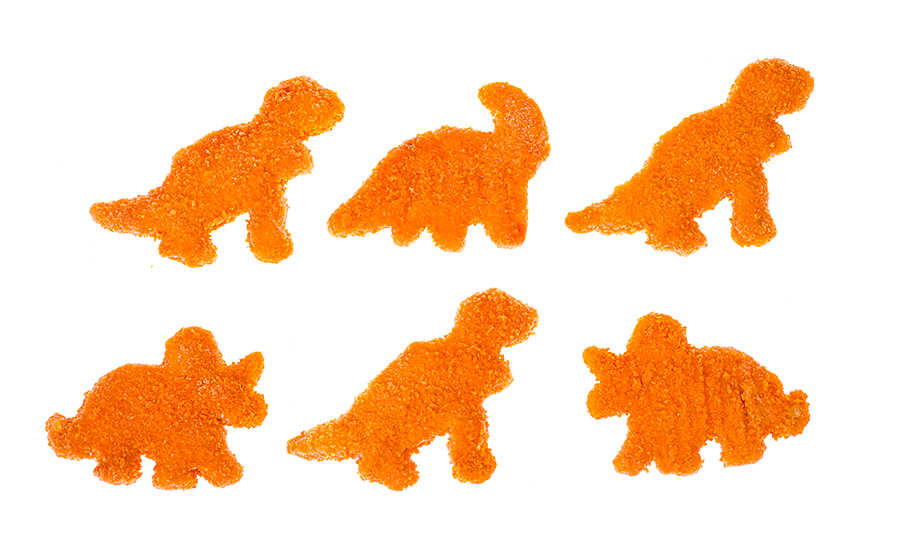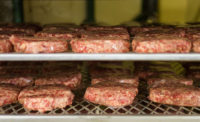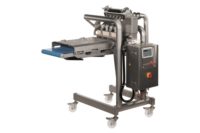The fresh-meat forming process works best with quality raw materials, but equipment and process can overcome many raw-material flaws. Many processors still are making a careful selection of raw materials, such as using cuts or carcasses that have different performance, fat types, textures and flavors as well as different protein function, says Jeff Sindelar, associate professor and extension meat specialist in the Animal Sciences College of Agricultural and Life Sciences at the University of Wisconsin, in Madison.
These raw materials are then subjected to advanced upstream processing, such as precise grind speed and size, which affects the grind quality. This then funnels into the actual forming process with fresh products being formed numerous ways today.
Historically, the main market of formed products has been foodservice and institutions, which often includes a lot of dense and compact formed products that have a tougher, heavier, chewier texture when they are cooked and a very different eating performance, Sindelar says. In the past five years, a push to create formed products that have the eating qualities that resemble more “handmade” quality has occurred, and equipment has been designed to have less compaction and also have less negative impact on the fat, protein and the total quality of the raw material, he explains.
For fresh restructured products, processors could use a higher value or even use a lower valued raw material or cut and deal with its shortcomings, such as trimming connective tissue, says Edward Mills, associate professor of meat science in the College of Agricultural Sciences at Pennsylvania State University, in University Park. “Any raw material works, but in some cases you have to do quite a bit of preparation — trimming, sometimes sorting — in order to make it a successful process,” he explains.
A processor then adds value to the product by reforming it. For example, beef tenderloins, which are a high-value raw material, might be full and round at one end and then trail off to a thin tail. Beef tenderloins can be aligned, reformed, binded and encased to make a uniformly round higher-end fillet, without the tail or tender tips. “It very quickly pays for the cost of labor and the binder material,” Mills says.
These reformed steaks are often sold to restaurants at which customers cannot detect the reformation. “The tenderness of that tail is every bit as good as the tenderness of the head,” Mills explains. “It’s just the shape of it that makes it a lower value.”

Processors are using this same reforming technique for other meat and poultry products, such as turkey breast cutlets to greatly improve the yield of cutlets, Mills says.
When reforming a meat or poultry product, processors must consider that putting the two surfaces together has created the possibility of having microorganisms. In turn, processors must add an antimicrobial intervention to the forming process or even use high-pressure processing after the reformed product is packaged, Mills says. In addition, with the industry’s move to cleaner labels, processors wanting a natural or clean label must consider which binder to use in the reforming process, Mills says. NP





Report Abusive Comment